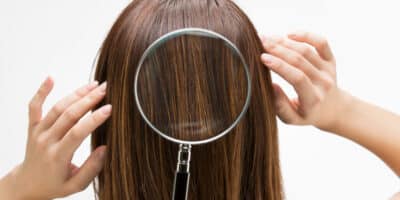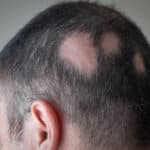 What is hair analysis?
What is hair analysis?
Hair Analysis is an examination for identifying problems in the hair or scalp, to find out the causes of these problems, or to identify possible problems that may arise in the future and to find solutions. A person who has undergone a hair analysis can obtain comprehensive information about their scalp and hair strands. Hair analysis determines hair type, hair quality, frequency of hair appearance, causes of hair loss, scalp problems and diseases. Depending on the problem that the person is experiencing, the applied analysis types may differ, it can be with or without a device.
How is hair analysis done?
Hair analysis can be done in several ways. The process of examining hair follicles, scalp, and hair strands with a device called a dermoscope by dermatologists is called trichoscopy. With this method, the image of the hair and scalp is magnified a hundred times. On a trichogram, a certain hair is pulled out, and the amount of hair and the condition of its roots are examined under a microscope.
In this way, the hair roots are analyzed microscopically. Through the hair analysis process, hair density, hair quality, skin type and problem, and the thickness and degree of hair loss can be determined. After examining and analyzing the hair, if the person suspects a systemic problem, the specialist doctor may additionally request some blood tests from the patient. It provides treatment based on the cause of hair loss, especially by addressing various hormonal problems or changes in vitamins, minerals and blood counts.
The dermatologist makes the diagnosis after analyzing the hair, and in intermediate cases, he may request a hair biopsy. On the other hand, a hair biopsy is the process of taking a piece of a hair follicle the size of a lentil from the surrounding skin by anesthetizing the problem area, including the hair roots. The biopsy taken is evaluated by the pathology laboratory, and a diagnosis is made based on its results. Medicated solutions, creams, and shampoos can be used to treat conditions such as dermatitis, eczema, and fungus.
What problems can be detected by hair analysis?
 Causes of hair loss: It shows at what stage is baldness. What is the type of hair loss (androgenetic, alopecia, fungal, etc.)
Causes of hair loss: It shows at what stage is baldness. What is the type of hair loss (androgenetic, alopecia, fungal, etc.)
Scalp diseases: Possible scalp problems have been identified. Problems such as oily scalp or seborrheic dermatitis and eczema on the skin can be found.
Other lesions on the scalp: Moles on the scalp, palpable lesions, subcutaneous swelling.
Hair thickness and hair shaft structure: The thickness and fineness of the hair fiber is determined, and if there is any defect in the shape of a hair strand, it is detected.
Hair density: The amount of hair in a square centimeter area of the scalp is determined.
In light of the data obtained from the hair analysis application, the severity of the problem is determined by determining whether the problem is in the hair or scalp, and if it is regional or hormonal.
One of the most important steps in hair analysis is to determine the type of hair loss in a person. Therefore, the problem revealed by the analysis is important. Based on the results of the analysis, the specialist doctor makes a diagnosis and begins the necessary treatment. You can read other articles on our page to get information about other methods such as PRP, mesotherapy, hair transplant for hair loss.
The hair analysis application is extremely important for the subsequent proper care in the analysis of scalp diseases, hair loss and scalp diseases.
Who should have a hair test?
There is no specific age range for hair analysis. Because this application can be made by people of any age who have problems with the scalp and hair.
People who don’t have hair problems can also use the hair analysis procedure. Thus, possible problems that may arise in the future can be determined in advance by performing a hair analysis. Then, with the right products, they can protect the hair from damage.
Should hair analysis be done before hair transplantation?
Before hair transplantation, a detailed examination by a doctor should be performed. During this examination, the hair is analyzed. Taking into account the density of hair in the area where the hair follicles will be taken, it is determined whether this area is at a sufficient level to cover all of it. During the hair analysis before the procedure, the structure of the hair follicles and the thickness of the hair fiber are determined. This analysis is important because thin or thick hair strands are important factors in hair transplantation. In addition, the hairline should be determined before the operation. Before the procedure, if a person suffers from diseases such as blood pressure, heart and diabetes, he must also declare this.
How much does hair analysis cost?
Hair analysis prices can vary from person to person. It is illegal for centers approved by the Ministry of Health to list prices on their websites. For the most accurate price information for you and for all other questions, call the clinic on +90212 241 46 24












